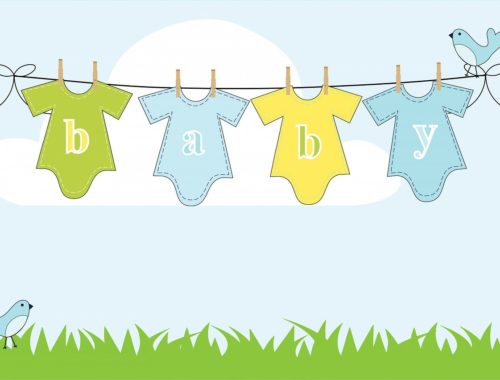
HOW TO SAY NO TO YOUR CHILDREN WITHOUT USING “NO”
I don’t know about you but if you have landed here it probably means that you are as desperate as I am or was. You want to know how you can say no to your children without using No all the time.
In the mornings, I wake up my 3-year old child to go to kindergarten and tell her to get dressed or to make her bed. And what is the first thing she says to me? – “NO”. It doesn’t even have to be a real NO but I have started to become allergic to this word.
Since young children copy everything we do, I have tried to listen to myself and see how often I use the word NO. And it is impressive! I wasn’t even able to count how many times. Or I stopped after ten times in one hour.
How about you?
So, what can you do to change that? How do you say no to your children without using the word NO?
Be positive and assertive
It is not always easy to be calm with your children and to take the time to answer assertively.
But what does that even mean?
Today, NO is seen as a bad word.
We would be quickly fed up with a colleague whose reply is No to every request we make. This is why it’s good to learn how to say No in a more positive way.
Be patient with yourself and with your child! A change in behaviour will not happen overnight.
If you keep calm and stay positive while talking to your child, you will have a relationship that is more serene and calm. You’ll find common ground, laugh more often, play together, be less stressed.
Timing
One way of saying No, is telling your child that she can do later the thing she wants to do now. Like that you’ll let her know that now is not the moment without doing it the harsh way.
To the question :
“Mommy, can we have a picnic in the hallway?”
You can answer: – No, now is not the time, we have to go!
Or you could say:
– Of course. I can see, you have already prepared everything. We’ll leave it as it is and we’ll have a picnic when we get back.
Here my girl had to learn the consequence. “Just a short picnic, mommy, please!” – OK just 5 minutes.
We then had to run to kindergarten so we wouldn’t be late.
“This is exhausting, mommy” – I believe you, this is why I told you we didn’t have time for a picnic, now we need to run. Do you understand why mommy wanted to do it later? – Yes, mommy.
To the question :
“Mommy, can you pass me this book, please?”
You can answer: – No, let me finish. I’ll give it to you once I’m done.
Or you could say:
– Of course. I’ll give it to you once I’m done.
Alternatives to saying No
You can offer reasonable alternatives to your child. Alternatives that you think she will like.
To the question :
“Mommy, can I play with finger paint?”
You can answer: – No, you are going to get yourself dirty. Or use a table-cloth so the paint won’t stain everything.
Or you could say:
– Of course, you can. Just use a table-cloth to protect the table.
To the question:
“Mommy, can you buy me this scooter?”
You can answer: – No, we won’t buy anything, we came here to get a present for your friend.
Or you could say:
– This is a really pretty scooter. Lets put it on your wish list for your birthday.
Explain Why
This is how it works
Often, it is unnecessary to say No. If you don’t want your child to touch something, you can say
“This is dirty” – “This isn’t yours” – “This could harm you”.
You can also explain shortly that this is how the world works.
“Shoes are made to walk outside” – “Humans and animals have to be treated with respect”.
This works because it will help your child understand what is happening.
In my experience, this is not a reason my (particularly stubborn) child does accept.
There are consequences
You can explain that every action has a consequence.
“If you hit your friends, they won’t want to play with you anymore”.
(Read more about what to do when you child hits others, soon to come)
Routines and limits can help to say No less.
You can show your child the consequence to her actions and – very important – stick to it.
“You have not brushed your teeth, so I won’t read you a story tonight”.
For my girl that’s a very harsh reaction that always ends in tears. Have I told you that she is stubborn? She wants it all but is very frustrated when it doesn’t go her way.
Accompany your child
While your child needs to learn some consequences the hard way, some need to be accepted as they are.
You can help your child discover the world around her and to learn what is dangerous and what isn’t. It’s ok to fall on the grass while running around in the park; it’s not ok to fall from a ladder.
Your child needs to learn how to make her own decisions. This is why education is no walk in the park. Your child will resist but don’t forget that you are the authority!
This method of saying yes instead of no will take some practice. Sometimes you will feel tired or fed up but this won’t happen all the time.
My girl is currently adjusting to this new and more positive form of education. Some things work, some don’t. If they don’t, she has to learn the consequences the hard way.
It will get easier.
Your child will learn to understand your point of view and to think about her actions. With your help, she will learn what she wants and what she doesn’t want.
Together you can do it!
You May Also Like

The French school system – a beginners guide
17 April 2021
How to make natural homemade Fabric Softener
19 September 2020


2 Comments
Jenna
Hi, I really enjoy reading your blog! Thanks for your great articles. I read another article this morning, that I think you might be interested in, which talks about a similar topic than you in this blog post but has another important take that I thought you might be interested in: https://www.cnbc.com/2019/12/11/the-common-yet-parenting-mistake-that-psychologically-damages-kids-according-to-expert.html?fbclid=IwAR33tpGhKSA4c4OoVJgmDVE0o9PnaYumgIk-9Ao6hPB-D1iHe7dkzA3zo84
Aline
Hi Jenna, thank you for your kind message 🙂 I really appreciate your feedback.
Just read the article and I agree. It would be great if we knew the right words all the time even when we are angry or tired… If you like books, The Conscious Parent by Dr Shefali talks more in depth about this topic.